The Boathouse by Alex Cochrane Architects
London-based studio Alex Cochrane Architects added a timber balcony and an open-plan interior to this Victorian boathouse in a deer park in the south of England.
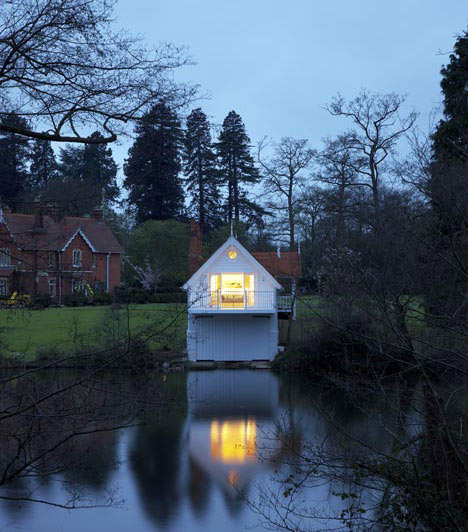
Overlooking a lake in Great Windsor Park, Berkshire, the boathouse was once the royal boat keeper’s lodgings but now operates as a writer's retreat.
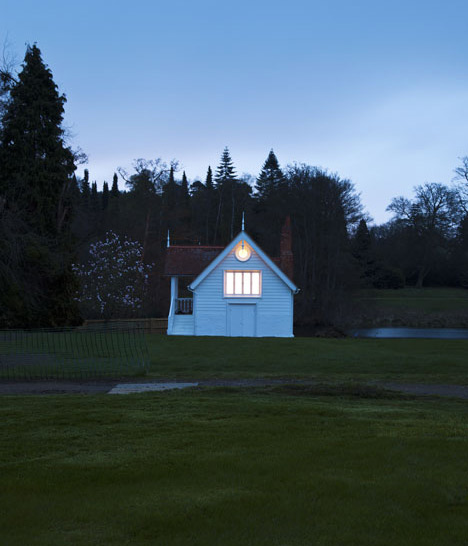
Alex Cochrane Architects stripped out the interior of the building but retained its A-frame timber beams, which had to be sandblasted due to damage from nesting birds.
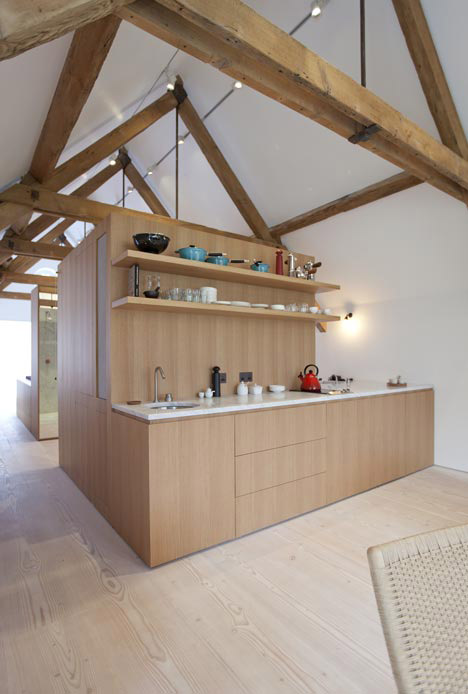
Large casement windows have been added to the southwest elevation, while folding doors open onto the new balcony. Roundel windows also allow light to reach the exposed roof structure.
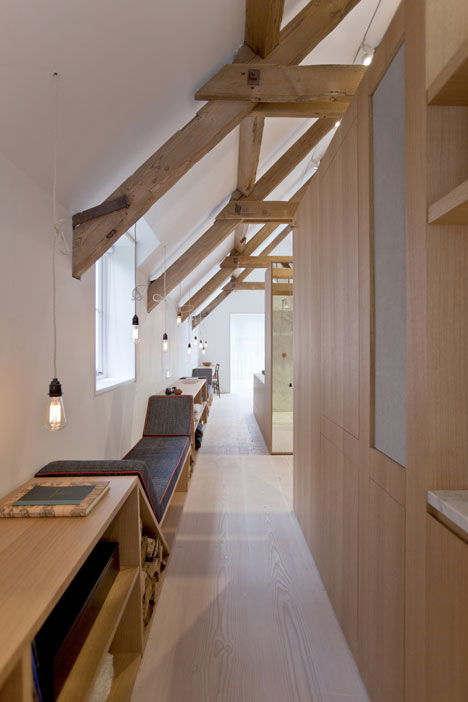
"We wanted to open up the two gable elevations to daylight and views without changing too greatly the historical appearance of the boathouse and its internal timber structure," Cochrane told Dezeen.
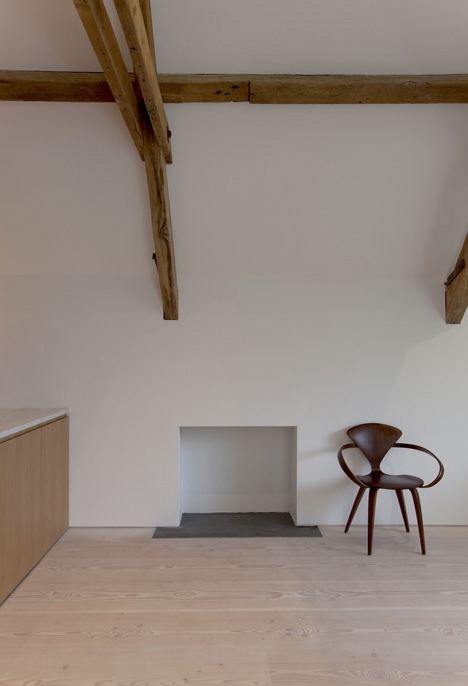
"We also wanted to include a cantilevered balcony that would 'float' over the lake, and in doing so had to tie back a series of steel beams to the original framework positioned in the centre of the boathouse," he added. "This was a complicated exercise given the fragility of the existing structure."
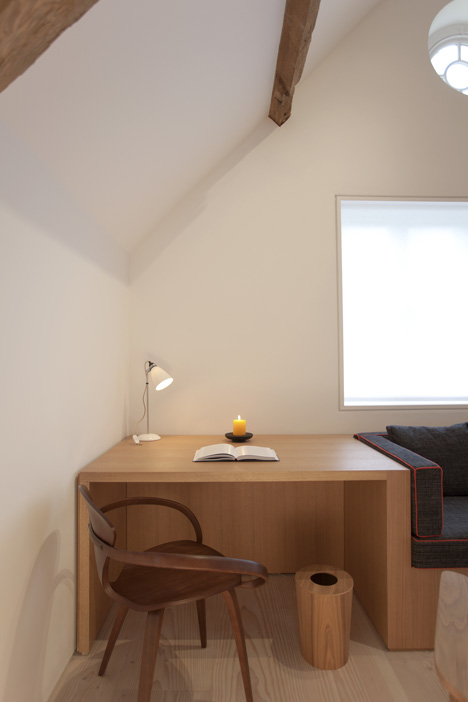
The entrance to the boathouse leads into the kitchen and living area, which also contains a built-in sofa and desk under the window.
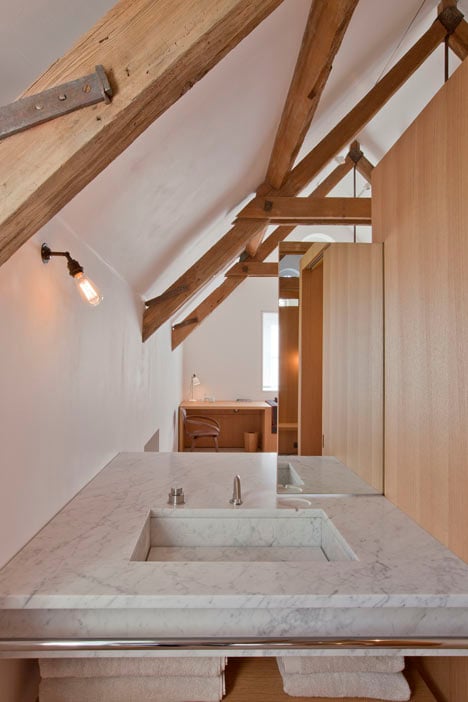
The shower, toilet and dressing areas are placed in the centre of building and divided by sliding doors and mirrors, while the bedroom at the far end leads to the balcony overlooking the lake.
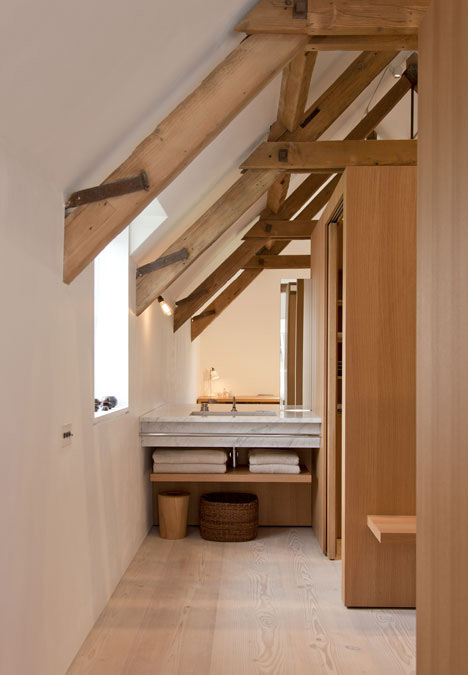
A low-level joinery unit runs the length of the building, serving as a bookshelf and reclined seating, with a dressing table incorporated at the bedroom end.
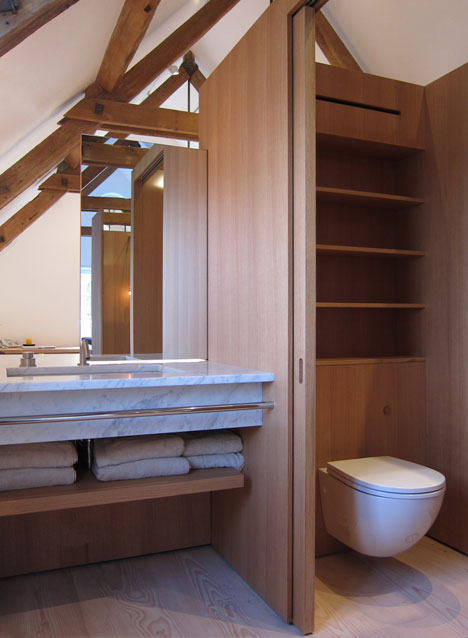
Oak veneer panels have been used throughout the interior, including the kitchen units and bed as well as the walls and doors of the bathroom.
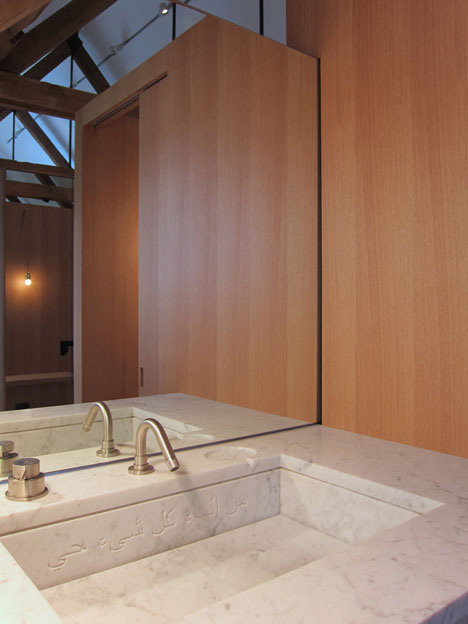
A ground source heat pump from the lake supplies the heating coils beneath the Douglas fir floorboards.
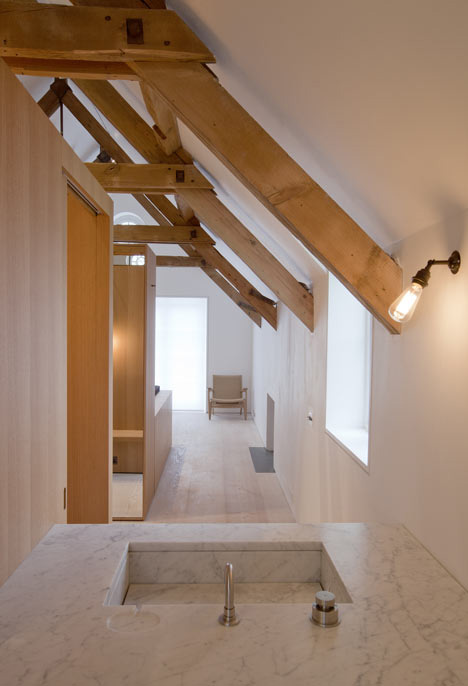
We recently reported on Alex Cochrane Architects' redesign of the menswear department of Selfridges in London.
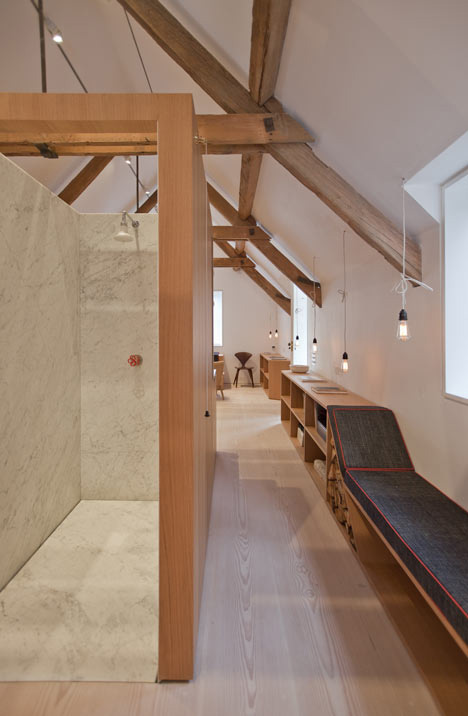
We've also featured a boathouse in Norway with folding flaps in its facade and another in Texas with a waterfall cascading from its upper storey.
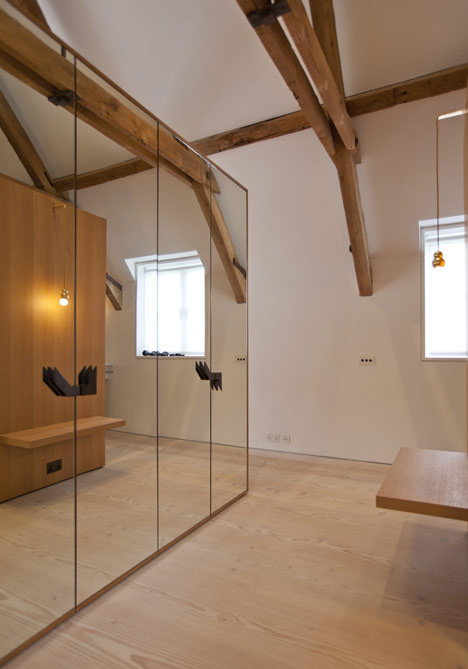
See all our stories about boathouses »
See all our stories about British houses »
Here's some more information from the architects:
Alex Cochrane Architects were offered the opportunity to design and oversee the comprehensive restoration and remodelling of a Victorian Boathouse overlooking the lake of Virginia Water in Windsor Great Park, Berkshire.
The top floor of The Boathouse, once the Royal Boat Keeper’s lodgings, now serves as a spectacular all-inclusive retreat taking advantage of one of the most outstanding settings of the south east of England. The ground floor maintains its purpose of housing boats with two large timber doors opening outwards onto the lake.
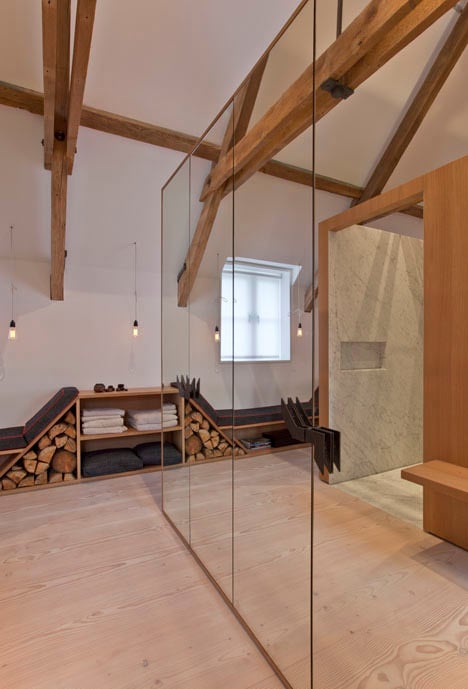
Proposal:
It seemed appropriate that The Boathouse, an independent but redundant structure, set in isolation on the banks of a lake and surrounded by unparalleled natural beauty, should be revived as an ultimate place of refuge, inspiration and reflection away from the demands of city life.
ACA proposed a number of extensive changes to the structure. These included the substantial opening up of the two end elevations with new and larger windows, the addition of a new timber balcony that would 'float' directly over the lake and the complete stripping out of an obsolete interior for a contemporary open plan arrangement of three interlocking 'living' zones. In addition, we were able to deliver an environmentally sustainable approach towards the heating of The Boathouse.
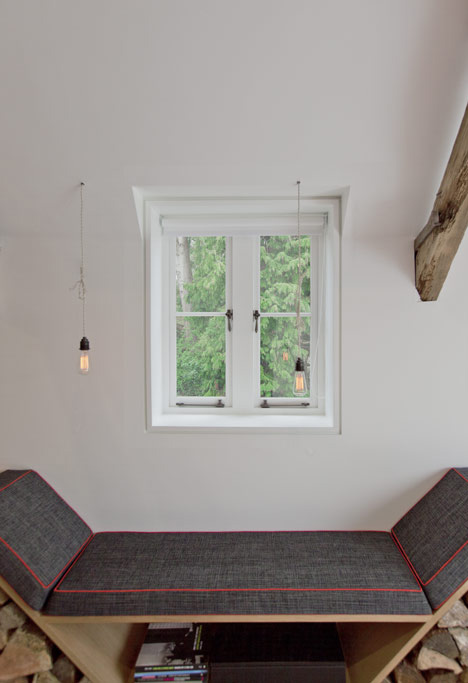
Architecture / Main works:
The interior fabric was completely stripped out revealing a surprisingly sound A-frame structure that until then had been hidden from view. Years of neglect and nesting birds had nevertheless taken their toll requiring the A-frames to be sandblasted exposing the true warmth and texture of the wood. These repetitive structures now serve as key historical and functional elements of the design.
The two white painted timber boarded end elevations were extensively opened up to allow light to penetrate the darkest areas of the Boathouse while ensuring a more transparent relationship between the interior and its natural setting. Larger period style casement windows were added on the southwest elevation and new period style folding doors now open wide onto the new cantilevered balcony.
Roundel windows were added at both end elevations providing for further light at ridge level while celebrating the newly exposed roof structure and elevated heights.
Altering of the external appearance had to be very measured. Surprisingly the structure was not listed, but any unsympathetic alterations to its original form would risk reversing years of history, royal associations and familiarity for those using the park. Any contemporary design solutions would be reserved for The Boathouse interior.
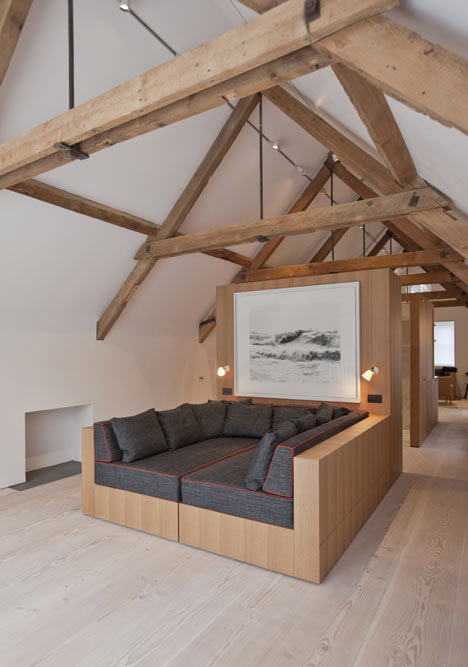
All the casement windows, doors and their respective frames were replaced along the long elevations due to rot and worm. A conservationist approach was adopted for any existing element that needed replacing in order to maintain the period appearance of the Boathouse within its natural setting.
The floor structure was far from level and inadequate to support the proposed interior elements and the cantilevered structure supporting the balcony so there was little alternative but to replace the joists in their entirety with new ones.
There was no local supply of gas but Virginia Water Lake presented itself as a fine opportunity to provide constant heat throughout the year by way of a ground source heat pump. The Crown Estate were in full support for this ecological approach of laying 300m of ground loops 2m deep on the lake bed. The heat generated from the lake would supply the under floor heating coils beneath solid timber flooring.
Additionally, the removal of all the internal linings allowed for high levels of insulation to wrap around the perimeter walls, roof structure and between the floor joists increasing the sustainability credentials of the refurbishment.
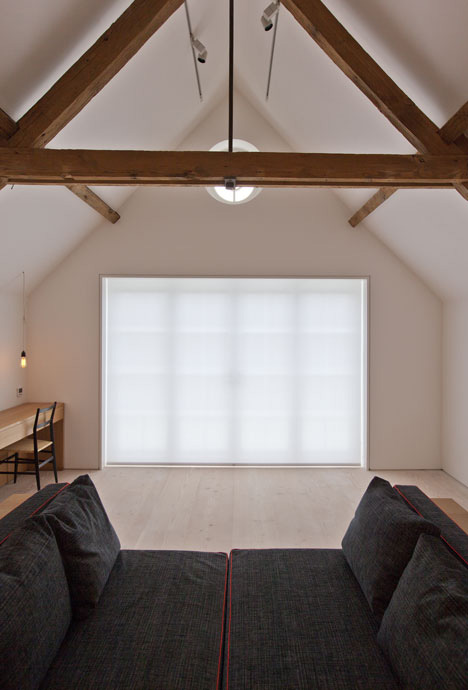
Fit-out / Arrangement:
The interior is divided into three open zones providing the essential means that one might wish for in everyday life such as sleeping, reading, bathing, resting, working and eating.
A multi purpose low-level joinery unit runs the full length of The Boathouse connecting these three zones. This joinery unit predominantly serves as a library while two upholstered reclining benches are advantageously integrated below the windowsills and a vanity desk is incorporated at bedroom end of The Boathouse.
Upon entering The Boathouse one arrives in the cooking, eating, writing and seating area. This zone remains open plan with a degree of flexibility allowing the various activities to take their course. A large low-level table provides a central location where these activities can merge.
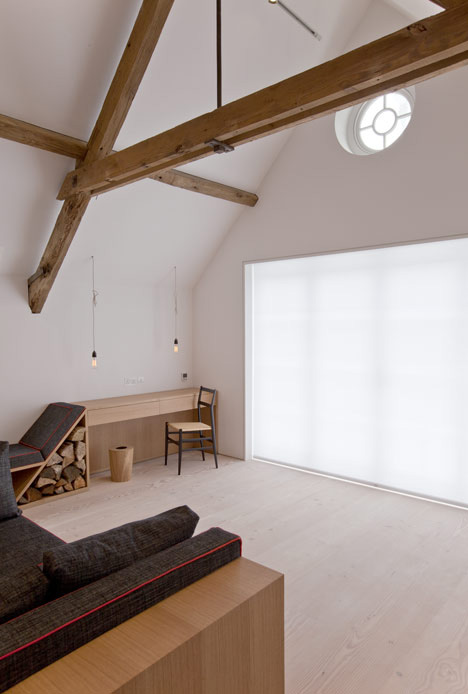
The middle zone is further divided into a series of interlocking but ultimately separate spaces including the shower, changing, loo and vanity areas. The design allows for a dynamic relationship between all four parts while addressing the conflicting attributes of privacy and transparency in the form of concealed sliding doors and mirrors.
The third zone is the resting and sleeping area where a large bed lies at the center, looking out over the cantilevered balcony and onto the lake. When the folding glass doors are open, one absorbs the unsurpassed views of Virginia Water and Windsor Great Park. It is here that the romanticism of The Boathouse interior and its relationship within its natural setting is most profound.
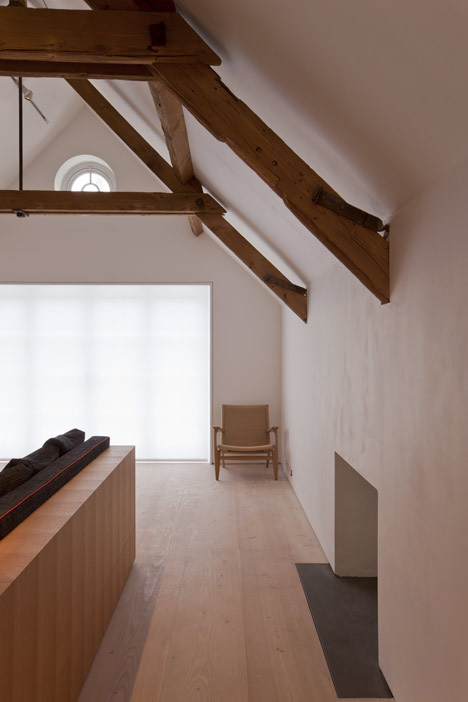
Materials:
The Boathouse design was very much material led. Contemporary design solutions were incorporated within the project and building process but traditional and natural materials were preferred. The goal was to offer a warmer atmosphere that might be expected in a retreat of a former age. It was also essential that the pallet of materials remained restrained to underline the clarity and simplicity of the interior elements and the spaces.
Straight-grained oak veneered panels were generally the material of choice with full-size honed Carrara marble slabs introduced in the shower area as well as for the kitchen and vanity surfaces. Dinesen Douglas floorboards were chosen due to their solidity, long lengths, wide widths and a livelier grain that would be the perfect complementary material against the more uniformed grain of the oak joinery units.
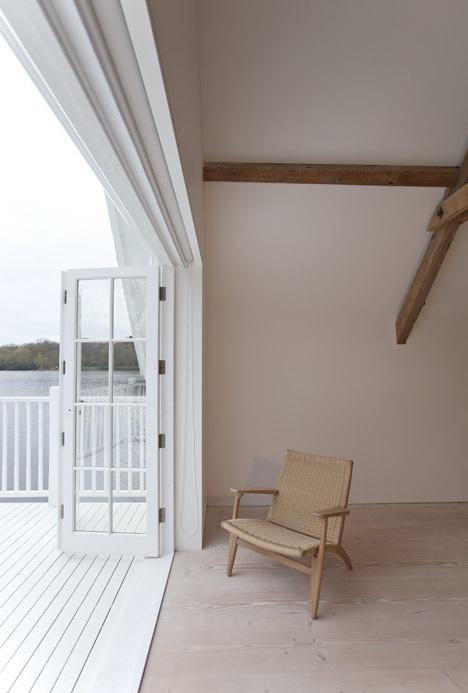
In keeping with the minimalist aesthetic, honed Basalt hearths provided an earthy colour and depth to two fireplaces that are otherwise without any decorative detail. Mirrors line the tall cupboard doors and sliding vanity panel serving a practical purpose as their reflections playfully confuse the arrangements of certain parts of the interior. Great attention was given to even the smallest of components. Bespoke solutions were provided for door handles, lighting, switches and even the toilet flush.
Very fine detailing and precision in the fabrication process were key in defining the purity and quiet sophistication of the interior elements. In order to achieve such an acute level of precision, the joinery and fabricated elements were constructed in workshops and later assembled on site.
Furniture & Lighting:
Nearly all the furniture is bespoke and integral to the design of The Boathouse interior. Two chaise long sofas come together to form a large bed, the reclining seats below the windowsills appear to be carved out of the bookshelf unit, the main seating area returns to form a writing desk and a very large low level table serves a number of functions: it can be an eating or entertaining surface or a platform for books and objects.
A number of free-standing chairs inhabit the interior including Gio Ponti’s Super Leggera, Norman Cherner’s plywood chairs and the Hans Wagner CH25 all preferred for their pared down aesthetic.
Erco track lighting provides directive light from high level, cage lights with bronze bulb holders are suspended above the low-level joinery table and a gold plated Ball Light by Michael Anastassiades hovers above the changing area bench.
Objects and Art:
In line with a less-is-more approach and where emptiness is actually celebrated, the selection of artwork has been purposely limited. A seascape photograph entitled Hurricane by Clifford Ross is appropriately positioned above the bed and facing the lake while William Peers’ sculptures from his 100 Days and Flow series inhabit parts of The Boathouse.
All accessories have been chosen to serve a practical purpose whether it be Andrew Bird’s log baskets from Great Yarmouth, Liam O’Neill turned wood bowls from Co. Galway or Fiamma Montagu’s ceramic tableware and vases.
Project Team, Suppliers and Contributors
Client: Galewest Investments
Architects: Alex Cochrane Architects, London
Project Management: Clinton Cowley for Galewest Investments, Berkshire
Main Contractor: Robert’s Building Company, Surrey
Joinery: John Baulkwill for Opus Magnum, London
Stonework: David Jones for Verona Marble, Kingston
Floorer: Peter Moyces for Cavendish Floors, Chiswick
Sculptures: William Peers, Devon
Ceramics / Tableware: Fiamma Montagu, Oxfordshire
Tatami mats: Wabi Sabi, West Sussex
Freestanding Furniture: Supplied by Aram, London.
Lighting: Ball Light by Michael Anastassiades, Sigmar, London Filament lighting and accessories, Urban Cottage Industries Track lighting, Erco, London